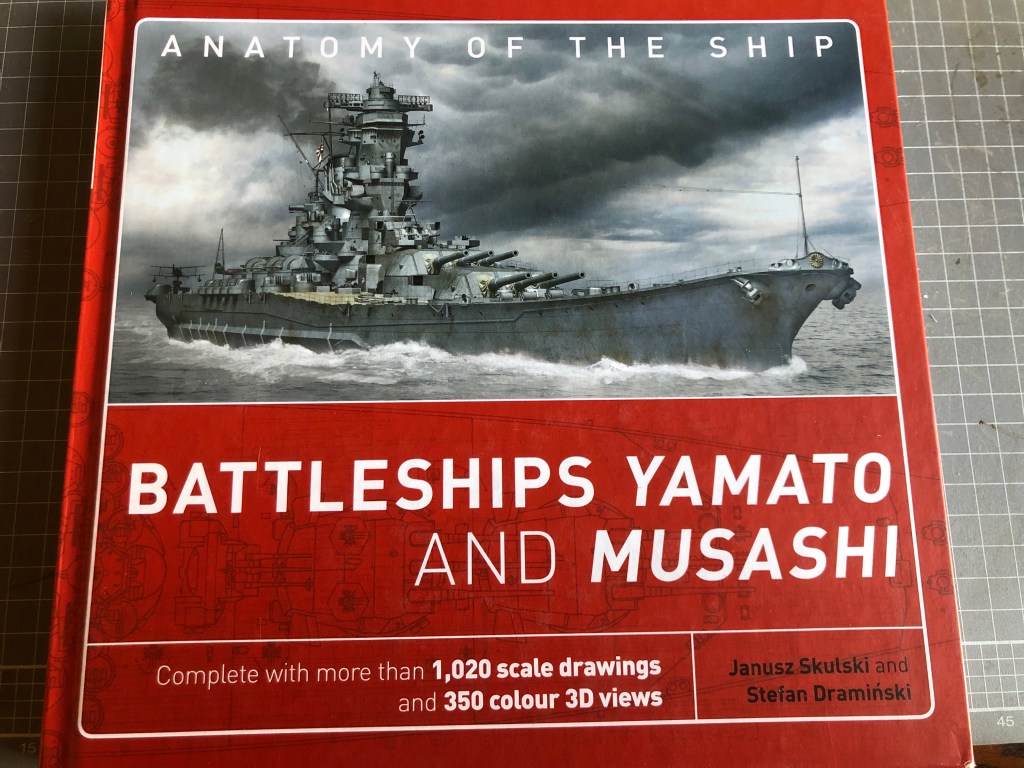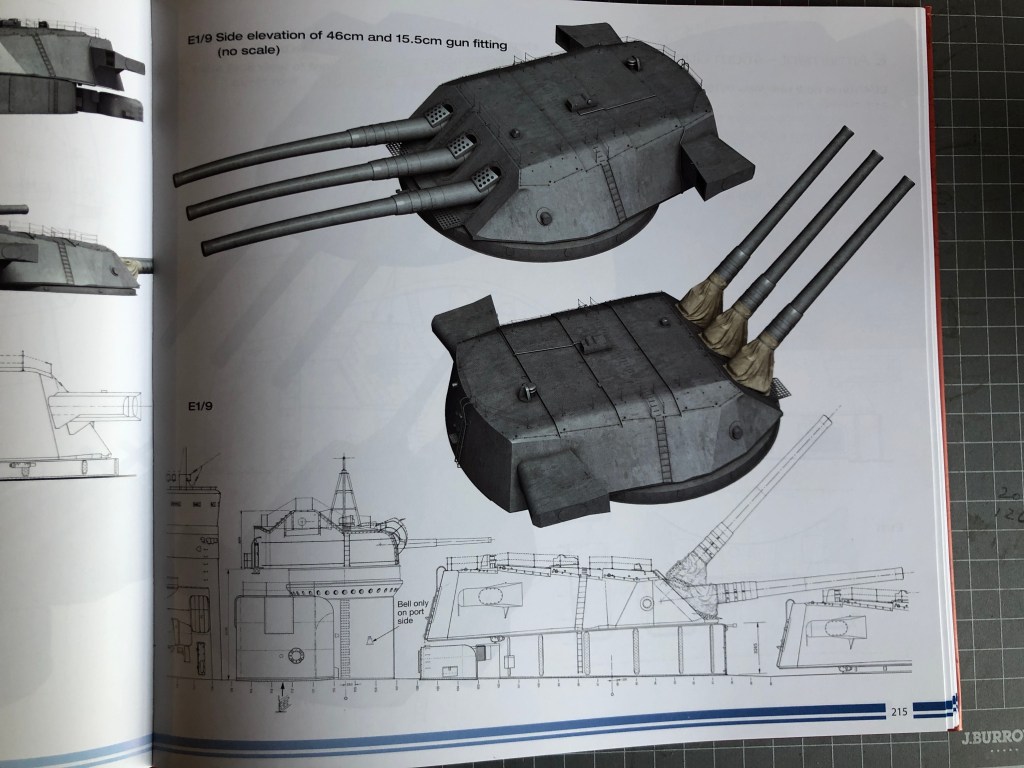A Book Review. And Consequences.
by John
In common with many other males, (whoops. Possibly females as well, although I know of none.), I have long had a fascination with battleships. Of all eras from the ancient Greeks and Romans, Nelson’s, dreadnoughts, WW1 and WW2. Read the novels, made models from kits and from scratch. I have quite a library of books.
Recently, I purchased this book…

336 pages. 350 colour views, including some original photographs, and lots of details. 1020 scale drawings of excellent quality. 43 pages of history and specifications. The bulk of the book is superb quality pictures and drawings.
These battleships, at 72,000 tons, were the largest ever constructed. And they mounted the biggest guns ever used on a battleship at 18.1″. Each of the 3 gun turrets weighed as much as a heavy destroyer, 2500 tons. They were 250 meters long, and 50 meters from keel to the top of the superstructure. Their 4 turbine engines drove the ships at 30knots/50kph. Each ship had 25,000 tons of armour, up to 560mm thick!!
“Awesome”, seems insufficient.
The Imperial Japanese Navy had them built to outgun the most powerful battleships of the US Navy and western powers. However they were dinosaurs, and both were sunk by aircraft. Neither fulfilled their intended role of fighting other battleships.
The book is divided into 4 sections….
Section 1: Introduction, Superbattleships and Summary of Service. 43pp.
Section 2: Primary Views. 25pp.

Section 3: The Drawings. Subdivded into general arrangements, Hull structure, Superstructure, Rig, Armaments, Fire Control, Fittings, Aircraft, Boats, Author’s Model. 252pp

Section 4: Yamato and Musashi at sea, Remains of Yamato and Musashi 12pp. The pictures “at sea” are computer constructions, using the author’s model, and incredibly convincing. Initially I took the pictures to be of the originals.
Both ships were sunk by massive US air power, with the loss in Yamato’s case of 90% of its crew of 3,300 sailors. Almost as sad, almost all of the original construction plans and details were destroyed by the IJN after the Japanese surrender.
So, if you have any interest in battleships, massive marine engineering, WW2 naval history, or ship modelling, this book is an absolute must.
Consequences??
After reading the text, and going through the pictures multiple times, and being captivated by the wonderful lines of the ships, I decided to make a model of Yamato. Kits vary from 1:1000, to 1:100, with the larger scales being in the thousands of dollars.



The following is the only surviving plastic model of mine. Another ship with wonderful lines.

A question to my readers….. would the progress of making the model Yamato be of any interest?

Do you ever sleep!
Yes I would be interested.
LikeLike
Sleep? Not much lately, but that is another discussion. And thanks for the feedback.
LikeLike
I would be interested to follow its progress, John – and look forward to seeing the finished product!
LikeLike
thanks for the feedback Phil
LikeLike
Yes definitely be interested in following the model build..
LikeLike
Need you ask John?
Of course I and more than a few others will follow your adventure.
And maybe, perhaps, along the way you might explain why they called the (fire control posts?) pulpits in the book. Guess that remark stems from years of church attendance where we were given directions, dictates and diatribes on life. 😉
LikeLike
Hmm. Didn’t pick that one up, but will keep my eyes open. JV
LikeLike
….and assembling a plastic kit is a bit left of field for metal machinists. That’s why I asked first. John V.
LikeLike
Another interesting review thanks John.
To your question, I’m interested in all kinds of modelling where pains are taken. You take pains John so I would follow your battleship project with interest.
I agree that it would be all the more rewarding if your grandson caught on and accumulated some fond memories of his grandfather.
Kind regards,
Tim
LikeLike
thanks Tim. Noted.
LikeLike
Yes, I would follow the build of the ship.
LikeLike
Thanks for the feedback John
LikeLike